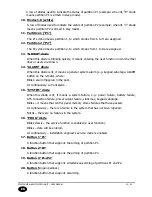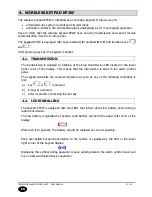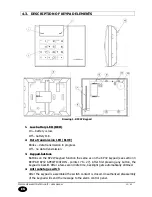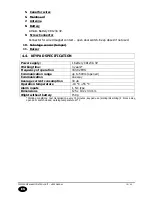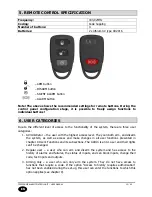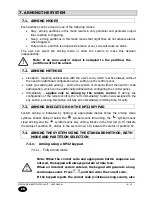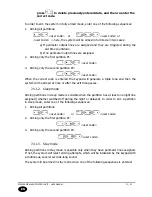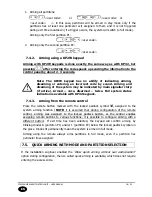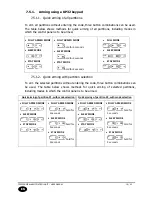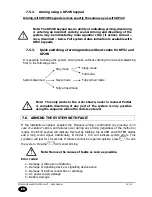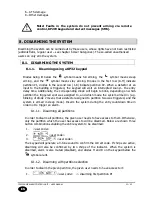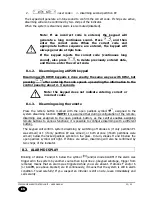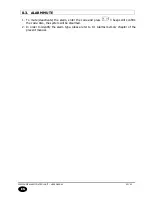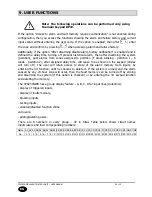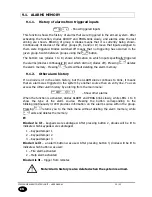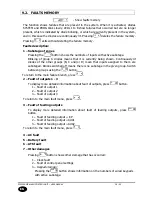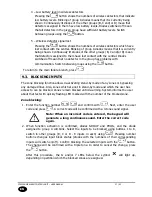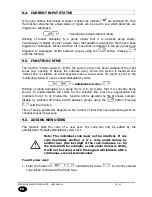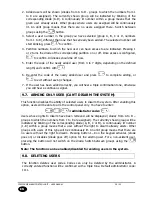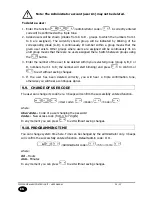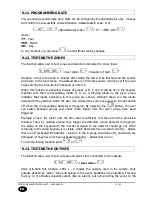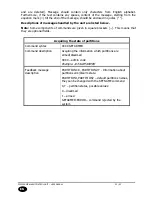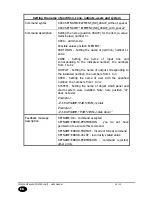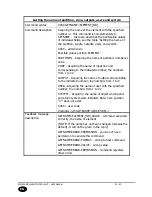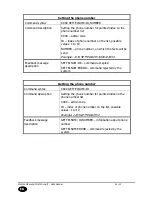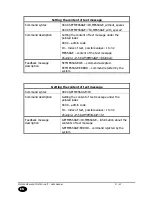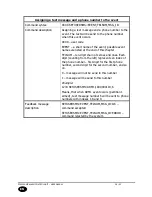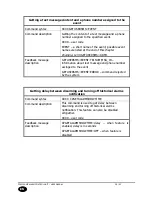
CPX230NWB ALARM CONTROL UNIT – USER MANUAL
24 / 42
EN
9.
USER FUNCTIONS
Note: The following operations can be performed only using
the main keypad KP32.
If the option “Access to alarm and fault memory requires authorisation” is not enabled during
configuration, then you access the functions showing the alarm and failure history and current
input status without entering the user code. If the option is enabled, then after
, enter
the code and confirm by pressing
when accessing alarm and failure history.
Additionally, if the option "After disarming disable alarm history notification" is enabled and is
defined the delay time turning off present historical alarm, then after disarming the system
(partition), past alarms from zones assigned to partition (F diode blinking - partition 1, 6
diode - partition 2), after assigned delay time, will cease to be shown on the keypad (diodes
will turn off). The user will retain access to state of the alarm memory from inputs, by
entering the 3# function, until he chooses to delete it. If the system is armed, and the alarm
caused by any 24-hour zone will occur, then the fault memory can be turned off by arming
and disarming the system (if this option is checked) or by entering the 3# keypad function
and deleting the memory.
The CPX230NWB has a group display feature - A, B, C, D for input lines (detectors):
- display of triggered inputs,
- display of faults memory,
- blocking inputs
- testing inputs,
- enabled/disabled function chime
and users:
- adding/deleting users.
There are 8 numbers in every group - 32 in total. Table below shows circuit names
inputs/users and their corresponding numbers:
Name A1 A2 A3 A4 A5 A6 A7 A8 B1 B2 B3 B4 B5 B6 B7 B8 C1 C2 C3 C4 C5 C6 C7 C8 D1 D2 D3 D4 D5 D6 D7 D8
No. 1 2 3 4 5 6 7 8 9 10 11 12 13 14 15 16 17 18 19 20 21 22 23 24 25 26 27 28 29 30 31 32

